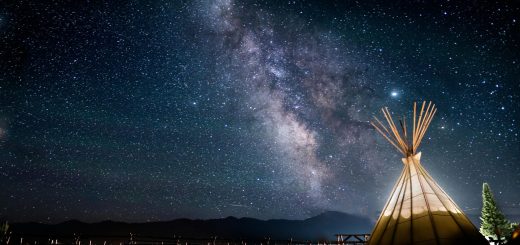How Did World Religions Spread Across Continents?

Before diving in, please note: This post is for informational purposes only. If you’d like to know more about how we approach topics, feel free to check out our friendly Disclaimer Page.
Hey there, amazing readers! 🖐️ Just a quick note: yes, we know there are a lot of ads here. Trust us, we get it—it’s not the prettiest look, but they help us keep this blog alive and kicking. Those pesky little ads cover the costs of all the behind-the-scenes magic, from hosting and tech stuff to creating content we hope you’ll love.
We’re committed to delivering quality posts, and your support (even just sticking around despite the ads) means everything to us. So, bear with us, and thanks for helping us keep the good vibes rolling. Now, on to the fun stuff! 😉
TRANSLATE BUTTON AT THE END OF THE ARTICLE
A Quick Overview
Have you ever stopped to wonder how religions have traveled across vast distances and cultures?
The story of world religions is one of adventure, exploration, and sometimes a little conflict.
Throughout history, people have spread their beliefs far and wide, influenced by trade, conquest, cultural exchanges, and the relentless human spirit to connect with one another.
In this article, we’ll embark on an enlightening journey, exploring how the great faiths of the world have made their way across continents and shaped societies in remarkable ways.
The Roots: Understanding the Birth of World Religions
The emergence of world religions traces its origins back to ancient civilizations.
Many religions began as localized beliefs, often tied to nature, community, and the cosmos.
Take Hinduism, for example; it sprouted around the Indus Valley and grew from a rich tapestry of local traditions and spiritual practices.
Similarly, Buddhism blossomed from the teachings of Siddhartha Gautama in India, emphasizing a path to enlightenment.
These religions weren’t born in a vacuum.
They developed alongside social and cultural dynamics, often reflecting the needs and desires of the people practicing them.
For instance, the need for moral guidance and community cohesion often drove the establishment of religious structures and teachings.
As communities began to grow, so did the search for deeper meanings.
People sought answers to life’s big questions—like the nature of existence and the afterlife.
This quest laid the groundwork for more complex belief systems.
Religions like Judaism and Zoroastrianism began to form around shared narratives and rituals, providing frameworks for understanding the universe and humanity’s place within it.
Moreover, the development of written language played a crucial role.
Sacred texts, such as the Vedas in Hinduism or the Torah in Judaism, provided a way to preserve teachings, laws, and stories.
These texts became central to each religion, offering a sense of identity and continuity for followers, even as they spread beyond their original communities.
As we delve deeper into this rich history, we’ll discover how these foundational beliefs traveled across continents, often carried by individuals who were passionate about sharing their faith.
Ancient Trade Routes: Highways of Spiritual Exchange
Trade routes were the veins of the ancient world, pumping life through civilizations.
They were not just for goods but were also arteries for ideas and beliefs.
The Silk Road, for instance, connected China with the Mediterranean, allowing not just silk and spices to flow, but philosophies and religions too.
Buddhism spread from India into Central Asia and beyond through these commercial corridors.
As traders moved, they shared their beliefs along with their wares.
Monks often traveled with merchants, providing spiritual guidance and teachings in exchange for support.
This exchange sparked a fusion of ideas, leading to a unique blend of cultural practices in places like China and Japan.
Similarly, Islam spread rapidly across trade routes following the life of the Prophet Muhammad.
The Arabian Peninsula’s bustling trade centers became hotbeds of Islamic thought.
From the 7th century onwards, as merchants traveled to places like West Africa and Southeast Asia, they brought Islam along.
These encounters led to the establishment of thriving Muslim communities in regions far removed from their original roots.
The influence of these trade routes was profound.
They enabled the cross-pollination of ideas.
As different cultures encountered one another, they exchanged religious practices, creating new interpretations and adaptations.
You could say these ancient highways were the original social networks, connecting people and facilitating a spiritual dialogue that transcended geographical barriers.
Conquests and Empires: Religion on the Move!
Conquests have historically been double-edged swords; they often brought about political domination but also facilitated the spread of religions.
The Roman Empire, for example, initially viewed Christianity as a threat.
However, as the empire expanded, so did the faith.
Eventually, Christianity became the official religion, promoting its teachings across Europe.
The Islamic conquests of the 7th and 8th centuries similarly transformed the religious landscape of vast regions.
As the Umayyad and Abbasid caliphates expanded, they brought Islam to North Africa, Spain, and parts of the Indian subcontinent.
These conquests often integrated local customs and beliefs, allowing Islam to adapt and flourish.
Moreover, the spread of religion through conquest often involved a degree of syncretism.
For instance, when Christian missionaries traveled to the Americas, they encountered indigenous beliefs.
In many cases, they blended certain aspects of Christianity with local traditions, creating unique expressions of faith.
The impact of these conquests was not uniform, and resistance often arose.
In regions where local beliefs were deeply rooted, the introduction of new religions sometimes led to conflict.
Nevertheless, the intertwining of empires and faiths forged a legacy that shaped the world as we know it.
Missionaries: The Pioneers of Faith Distribution
When we think of spreading religion, we often picture passionate missionaries hitting the road.
These individuals have played a pivotal role in disseminating faith across continents.
Take Christianity, for example.
From the early days, followers like the Apostle Paul traveled extensively, establishing communities and sharing the gospel.
In Asia, Buddhist missionaries journeyed along trade routes, as mentioned earlier.
They were instrumental in spreading teachings beyond India, helping Buddhism take root in places like Tibet and Japan.
The same goes for Hinduism, where devotees traveled to Southeast Asia, leaving marks of their faith in temples and traditions.
Islamic missionaries, or Sufis, ventured into remote areas, emphasizing spiritual practices over strict doctrines.
They often adapted their messages to resonate with local cultures, facilitating acceptance.
This approach led to the growth of Islamic communities in regions like Sub-Saharan Africa and Indonesia.
These missionaries were not just traveling salespeople.
They engaged deeply with the communities they visited, learning local languages and customs.
Their dedication often transformed into lifelong relationships, fostering a sense of shared purpose.
Through their efforts, they became the architects of religious landscapes in new territories.
Cultural Fusion: Where Religions Embrace and Evolve
A beautiful aspect of how religions spread is their ability to adapt and mingle with local cultures.
This cultural fusion occurs when religious beliefs intertwine with existing traditions.
Think about the vibrant blend of Native American spirituality and Christianity, where elements from both have shaped unique practices.
In places like Brazil, African religions melded with Catholicism, giving rise to practices like Candomblé and Umbanda.
This blending of beliefs showcases how people creatively navigate their spiritual needs.
It’s not about replacing one faith with another; it’s about enriching the spiritual tapestry of a community.
Similarly, the spread of Buddhism in East Asia led to interesting adaptations.
In China, Buddhist teachings merged with Confucian values, resulting in a distinct form of Chinese Buddhism.
This blend made Buddhism more relatable to the local populace, ensuring its acceptance and growth.
Cultural fusion brings about a rich exchange of ideas, allowing religions to evolve organically while maintaining their core identities.
The result is a more colorful, diverse spiritual landscape where people find meaning in their beliefs.
Colonialism: Religion as a Tool of Influence
Colonialism introduced a complex layer to the spread of religions.
European powers often viewed the colonization of new lands as a divine mission.
They believed it was their duty to spread Christianity to "save" indigenous peoples.
This perspective shaped their policies and interactions with local populations.
In many cases, colonizers imposed their religious beliefs alongside their political and economic systems.
The spread of Christianity in Africa, for instance, was often coupled with the establishment of schools and churches, serving as tools for both conversion and control.
While some individuals embraced Christianity, others resisted, leading to intricate dynamics of acceptance and rejection.
However, it’s essential to recognize that this process wasn’t one-sided.
Indigenous peoples adapted and incorporated aspects of Christianity into their own traditions.
This resulted in unique expressions of faith that reflected both influences, creating a complex spiritual landscape.
The impact of colonialism on religion is a bittersweet narrative.
On one hand, it facilitated the spread of faith.
On the other, it often led to the erosion of local beliefs.
The legacy of this era continues to shape religious identities today, reminding us of the intertwined nature of culture and faith.
The Role of Language: Bridging Religious Gaps
Language serves as one of the most effective tools for spreading religion.
It can either connect or create barriers.
When missionaries and traders traveled to new lands, they often faced the challenge of communicating their beliefs in unfamiliar languages.
Many religions made significant efforts to translate their sacred texts.
The Bible was translated into numerous languages, enabling wider access to Christian teachings.
This effort laid the groundwork for evangelism, making it easier for followers to share their faith.
In Islam, the Quran is traditionally recited in Arabic.
However, many Islamic scholars emphasize the importance of translation for understanding.
This adaptability has allowed Islam to reach diverse cultures and communities.
Moreover, language can act as a bridge between different faiths.
Interfaith dialogues often rely on shared linguistic understanding to foster connections.
When people communicate openly, they can find common ground, paving the way for mutual respect and understanding.
The significance of language in religious spread cannot be understated.
It’s a vital ingredient that enables beliefs to reach people’s hearts, regardless of their cultural background.
Modern Migration: Faiths Following People Across Borders
In our increasingly interconnected world, migration plays a crucial role in the spread of religions.
People move for various reasons—economic opportunities, escaping conflict, or seeking a better life.
As they relocate, they often carry their faith with them.
Cities today are melting pots of cultures and religions.
Take the United States, for instance.
Immigrants from around the globe have brought their beliefs, contributing to a rich tapestry of religious practices.
From Hindu temples in California to mosques in New York, the landscape is a testament to the diverse faiths that coexist.
Modern migration also fosters interfaith interactions.
Different communities often come together, leading to shared celebrations, dialogues, and mutual learning.
Festivals like Eid, Diwali, and Christmas are celebrated in many cities, promoting an atmosphere of inclusivity and understanding.
However, this migration can also lead to challenges.
Issues of identity and assimilation often arise as individuals navigate their faith in new contexts.
Nevertheless, these challenges also present opportunities for growth and dialogue.
As we look toward the future, it’s clear that migration will continue to shape the religious landscape.
Faiths will evolve, adapt, and enrich one another as people forge connections across borders.
Technology and Media: Accelerating Religious Spread
In the digital age, technology has revolutionized how we share and experience religion.
Social media platforms, websites, and streaming services have become powerful tools for disseminating faith.
Whether it’s live-streaming services or sharing inspirational quotes, the reach of religious messages has expanded beyond traditional boundaries.
Religious leaders now have the opportunity to connect with followers around the globe.
A sermon in one part of the world can resonate with people thousands of miles away.
This democratization of religious content allows diverse voices to be heard.
Moreover, online communities have emerged, providing spaces for individuals to explore and discuss their beliefs.
Whether you’re partaking in an online prayer group or engaging in discussion forums, technology facilitates connections that transcend geographical limitations.
However, the digital landscape is not without its challenges.
Misinformation can spread just as easily as genuine teachings.
It’s essential for individuals to approach online content with discernment and critical thinking.
As we embrace technology, it’s vital to remember that it’s a tool—one that can enrich our spiritual journeys if used thoughtfully.
The potential for fostering understanding and compassion through digital platforms is limitless.
Festivals and Celebrations: Uniting Diverse Beliefs
Festivals and celebrations serve as beautiful manifestations of religious beliefs.
They offer an opportunity for communities to come together, share joy, and express their faith.
These occasions often transcend cultural boundaries, inviting everyone to join in the festivities.
Take Diwali, the Hindu festival of lights.
It’s celebrated by millions worldwide, showcasing themes of hope, renewal, and light overcoming darkness.
Communities come together to share food, laughter, and prayers, fostering a sense of belonging.
Similarly, Ramadan, observed by Muslims, involves fasting and communal prayers.
It’s a time of reflection and charity, where people from diverse backgrounds participate, whether through sharing meals or engaging in interfaith dialogues.
These celebrations create spaces where individuals can learn about different beliefs in a joyful atmosphere.
They foster understanding and appreciation, breaking down barriers between communities.
Festivals encapsulate the essence of human connections.
They remind us that, at our core, we all seek joy, love, and understanding—qualities that resonate across cultures and religions.
Interfaith Dialogues: Building Bridges of Understanding
As our world becomes more interconnected, interfaith dialogues have emerged as vital platforms for fostering understanding.
These discussions bring together individuals from different religious backgrounds to share experiences, beliefs, and values.
They aim to create a culture of respect and collaboration.
Participants often discover commonalities in their beliefs, leading to deeper connections.
Questions like "What do we value most?" or "How do we find meaning in our lives?" can bridge divides and create a sense of shared purpose.
Interfaith initiatives have taken various forms, from community gatherings to global conferences.
They emphasize the importance of empathy, compassion, and cooperation in addressing the challenges we face as a society.
Moreover, engaging in interfaith dialogues helps dispel misconceptions and stereotypes.
When people engage directly with one another, they can challenge biases and build friendships.
It’s a powerful reminder that we are more alike than different, no matter our faith.
The future of interfaith conversations looks bright.
As we continue to navigate an increasingly complex world, these dialogues will be essential in fostering harmony and understanding among diverse religious communities.
The Future of Faith: Religion in a Globalized World
As we look to the future, the landscape of faith continues to evolve.
Globalization has created a world where ideas, cultures, and religions intermingle more than ever.
This interconnectedness presents both challenges and opportunities for faith communities.
Religions will likely continue adapting to changing social dynamics.
New interpretations and practices may emerge as people navigate their beliefs in diverse contexts.
This evolution can enrich the spiritual life of communities and promote understanding.
At the same time, challenges such as religious extremism and intolerance remind us of the importance of dialogue and education.
Promoting understanding among faiths is vital to fostering a peaceful coexistence in our global society.
As we move forward, the resilience of faith communities will play a significant role in shaping the future.
Their ability to embrace change while holding onto core values will influence how religions adapt and thrive in a dynamic world.
In conclusion, the journey of world religions is a rich tapestry woven with history, culture, and the indomitable human spirit.
From ancient trade routes to the digital age, faith has traveled across borders, creating connections that unite us all.
As we navigate our diverse world, let’s celebrate the beauty of our differences and the shared values that bind us together.

The Enlightenment Journey is a remarkable collection of writings authored by a distinguished group of experts in the fields of spirituality, new age, and esoteric knowledge.
This anthology features a diverse assembly of well-experienced authors who bring their profound insights and credible perspectives to the forefront.
Each contributor possesses a wealth of knowledge and wisdom, making them authorities in their respective domains.
Together, they offer readers a transformative journey into the realms of spiritual growth, self-discovery, and esoteric enlightenment.
The Enlightenment Journey is a testament to the collective expertise of these luminaries, providing readers with a rich tapestry of ideas and information to illuminate their spiritual path.
Our Diverse Expertise 🌟
While our primary focus is on spirituality and esotericism, we are equally passionate about exploring a wide range of other topics and niches 🌍📚. Our experienced team is dedicated to delivering high-quality, informative content across various subjects ✨.
To ensure we provide the most accurate and valuable insights, we collaborate with trusted experts in their respective domains 🧑🏫👩🏫. This allows us to offer well-rounded perspectives and knowledge to our readers.
Our blog originally focused on spirituality and metaphysics, but we’ve since expanded to cover a wide range of niches. Don’t worry—we continue to publish a lot of articles on spirituality! Frequently visit our blog to explore our diverse content and stay tuned for more insightful reads.





